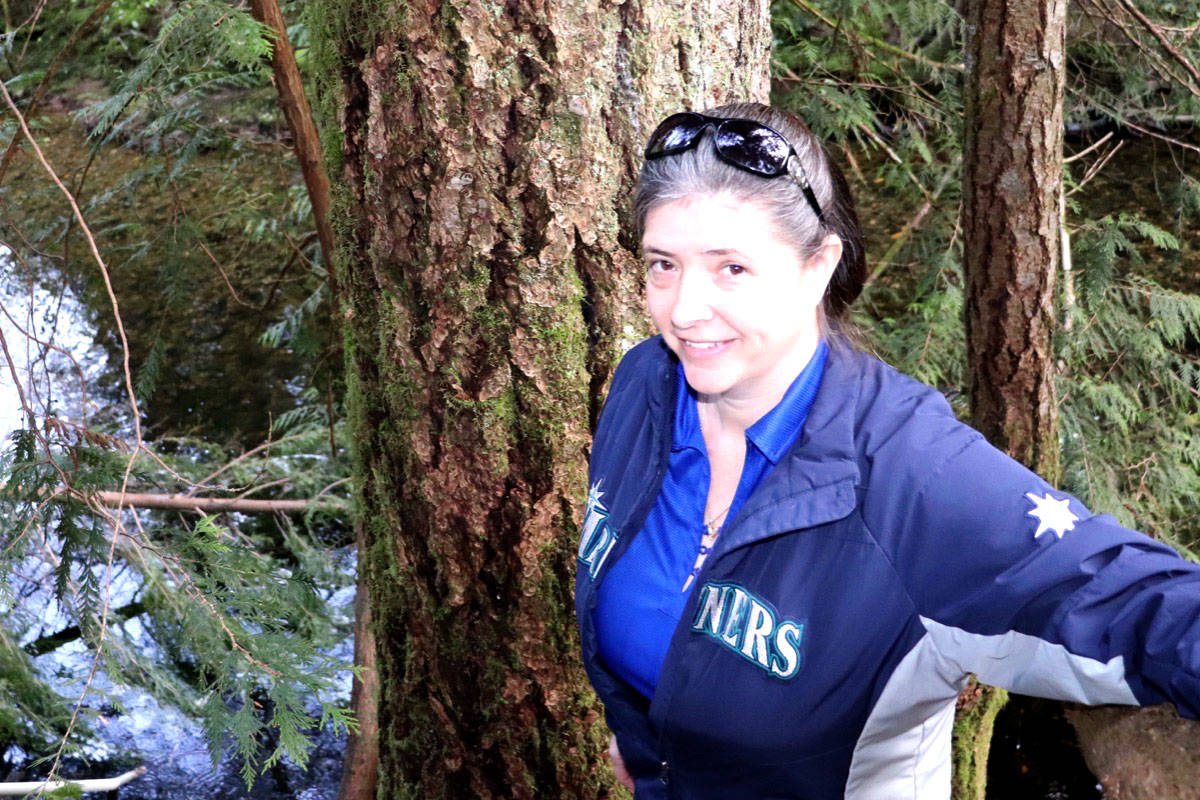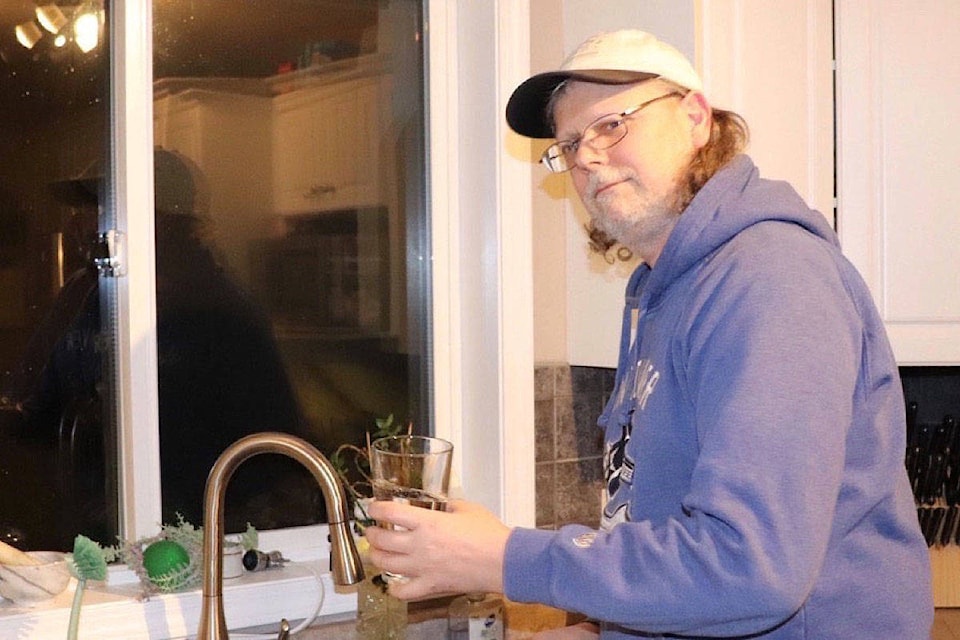Second of a three-part series
A convoluted patchwork of water systems, wells and surface water sources make up significant sections of the water supply for homes in the District of Sooke and the bordering Juan de Fuca Electoral District.
And while much of Sooke has safe and reliable water provided by the Capital Region District, many are not so lucky.
In this, the second in a three part series on water, we look at two of the areas where water is a constant source of concern and the impact that an uncertain water supply has on day-to-day life.
•••
When Julio Gody moved to B.C. from Alberta in 1999, he abandoned plans to build a home there when the government refused to allow the construction because of no reliable water source.
blackpress.tv
“They said, ‘No, you can’t build if there’s no water,’ so we just gave up on the idea and moved here,” Godoy said.
In B.C. across a property on Seed Tree Road, he loved the natural beauty of the location. He assumed the home had a water supply.
“I didn’t even think about water. I thought, ‘You can’t build a new house without water,’” Godoy said.
Godoy was wrong.
The water system that was in place as part of what is now called the Misty Ridge Community Water Company was a cooperative, ostensibly, designed to provide water to the homes in several stratas along Seed Tree Road. Unknown to Godoy, the utility was in protracted litigation regarding a host of issues. It’s also been under a boil water advisory since August 2018.
“Three months later, I find out that the water system was non-conforming. How did the CRD allow this house, all these houses, to be built?” he asked.
“The builder is long gone and the water system that’s here is tied up in court because there’s one person who has basically hijacked the system. I cut myself off from that supply and put in my own system and have to haul in water. The system cost me $35,000.”
Godoy also tried to sink his own well and, at 350 feet, he finally did find water, but the well is only productive in the winter months when Gody says it produces about three gallons an hour.
“I look outside and if it’s raining, I say, ‘OK, today we can have a shower,’” Godoy said.
“The truth is that we are always aware of the water we use. This is a five-bedroom house and when my children visit, we can empty my water tanks in a week.”
That water, hauled in from South Island Water, comes at a cost of more than $200 per delivery.
“We’re trapped here. I can’t sell my house without a reliable water supply. Who will buy a house without water?” Godoy asked.
Godoy has been in court 13 times in an attempt to resolve the situation, with no resolution in sight.
Just down the road, Keith Clarke finds himself in a similar situation.
“I bought the place in 2014 and, when I moved in, I had no idea. I’d actually been warned not to buy here because of some water issues. I had a lawyer who checked into it. I was told it was one issue that was resolved 10 or 15 years ago,” Clarke said. “That wasn’t right.”
Clarke got himself on the Misty Ridge Water Company board but discovered some practices that saw him become disenchanted with the local company.
“I was being held liable for the company’s legal bills. At one point, they cut off my water and expelled me from the board. I’d had enough and installed my own storage tanks and water system.”
That system cost Clarke $10,000 and he estimates the hauled in water costs him an average of $1,500 a year.
Clarke is also starting to install a series of eight, 1,000 gallon tanks that he will use to trap rainwater.
“The truth is that we really are trapped here. I can’t sell my house without a massive loss because of the water situation and, on a day to day basis, not having a reliable source of water means that every time I turn on the tap I have to think about the water I’m using.”
(Black Press reached out to Micky Fleming, the titular head of the Misty Ridge Water Company who refused to comment.)
Many kilometres away, the people who live on Young Lake Road have their own water concerns.
Kim Coldwell, a Sooke News Mirror employee, and her family have a cozy home amid scenic wilderness, but the home is about four kilometres beyond the reach of the piped CRD water supply.
By the CRD’s own estimates to extend the line to Coldwell and her neighbours would cost them about $4 million – a cost that would have to be borne by Coldwell and her neighbours.
Coldwell bought the property in 2007 knowing that her primary water source was DeMamiel Creek.
RELATED: New bulk water location
“We were drawing the water right out of the creek. Originally, there was a small pumping station and the water went through a reverse osmosis system with ultraviolet treatment,” Coldwell said.
“Within the year, though, the system stopped working and we just couldn’t afford to replace it.”
Now the family still draws water from the creek for washing and toilets, but even that presents problems.
“We have to clean out the filters we have on toilets and taps and when we open the shower heads there’s a lot of sand and pine needles and stuff. We have to clean all those pretty regularly, so no, we wouldn’t drink the water.”
The family now hauls water in from a relative’s home in a collection of jugs. The water is used for drinking, and cooking and there’s a need for constant vigilance to ensure the supply is kept topped up.
“We have a charcoal filter and a white filter to get some of the fishy smell out of the creek water, but we can’t drink it,” Coldwell said.
Dr. Amanda Booth, a local veterinarian, lives only a few hundred metres from Coldwell, but has been fortunate to sink a successful well on her property.
“Our water is great and probably spring fed, but I agree that you can’t drink the water from the creek,” she said.
Booth and Coldwell reported one of the problems is the indiscriminate dumping of material into the creek, upstream from their properties.
“There was a situation a few years back where it was found that someone upstream was dumping raw sewage from their motor home into the creek. We’ve seen all kinds of garbage dumped in there as well. It’s not safe to drink,” Booth said.
Booth is in the process of building another house across the street from her current home – a home, she hopes to make available to one of her staff members.
“We’re going to put in a rainwater collection system there with large collection tanks,” Booth said.
“It’s too bad that there are people who would contaminate the creek with all sorts of material. I think that some people just don’t care. But the system that we’re going to put in in the new place will be safe and sustainable.”
Unfortunately, stories regarding difficulties with water are legion.
In Shirley, concerns that the aquifer used by the Shirley Water Supply Corp. is under threat by development persist.
“(Our) water problems have not been resolved,” Shirley resident Helene Harrison said.
“The province needs to either have, or reinforce, [existing] laws and regulations which protect aquifers and watersheds. Environmental assessments of these areas can go far in protecting them in perpetuity if they are found to be environmentally sensitive, and override private and commercial interests.”
UP NEXT: The question of what can be done to protect access to safe water and what regulations need to be improved to safeguard, it is the third and final installment of this series.

